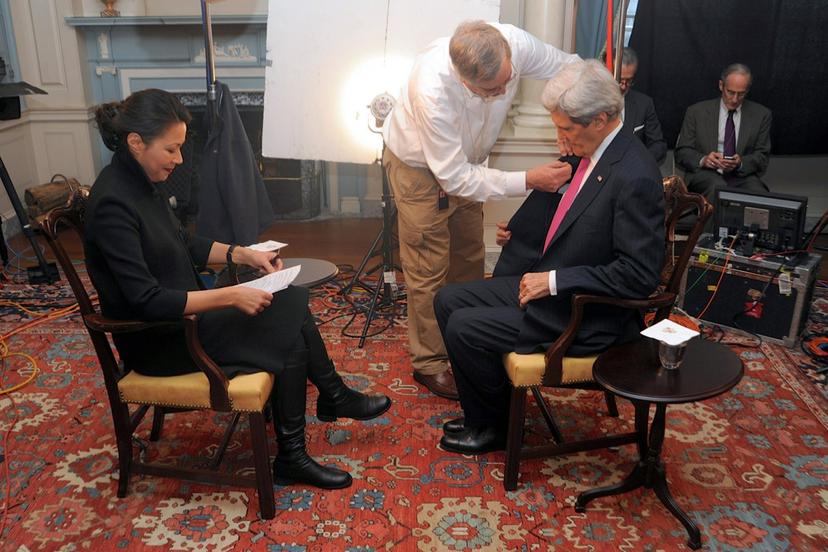Television

Structure
Americans age 15 and older spent an average of nearly 2.5 hours a day watching television in 2017, according to the Bureau of Labor Statistics. In any given hour, a cable or satellite viewer may have a choice of more than 100 programs; this number is increasing as more specialized cable channels develop original programming, and as digital television makes it possible to receive well over 100 channels in homes. Thousands of people work in various sectors and specialties in television to make these programs possible.
Some TV professionals, such as talk show hosts, news anchors, and sportscasters, are prominent across the nation or in their local communities. Others work behind the scenes, putting together the many programs aired on broadcast television and cable on any given day. For example, broadcast engineers and technicians maintain the broadcast equipment and salespeople sell airtime to advertisers to keep the station profitable. Large stations located in metropolitan centers can employ several hundred people, whereas a small station in a small city may employ as few as 35 people. Some programs are put together by people working on a freelance basis; producers, directors, and writers can be employed by a station or a production company to work on a single project or production.
Ratings systems determine what people are watching and when. Many families serve as a Nielsen family, filling out a diary, listing the programs they watched during a specific week. With numbers compiled by Nielsen ratings surveys, networks and affiliates determine what to charge advertisers for airtime during their programs. However, the highest-rated programs don't always have the highest ad rates. Nielsen surveys also provide numbers about the kind of audience (such as young or old, women or men) watching a specific program, and some advertisers prefer to target specific age groups and genders. Commercial TV stations rely on advertising revenue to stay successful, which is why much in the broadcasting industry (scheduling, staff, salaries) is determined by ratings.
Cable television networks operate under some of the same arrangements as commercial television stations. Some cable networks are advertiser supported. Although one cable station may seem to rely entirely on reruns of past hits and other old, commercial-television products, others create their own programs. Cable networks that focus on specific subjects of interest create special programming for their audiences. Other cable networks are subscriber supported and run motion pictures, athletic games, entertainment events, and movies produced specifically for cable.
Even the worst program on TV takes up its fair share of space in the air as it's transmitted along electromagnetic waves. So, in an attempt to keep things in order in a variety of ways, the Federal Communications Commission (FCC) was created in 1934. The FCC is involved in many aspects of broadcasting, from business matters to the content of programs. The FCC supervises and allocates air space, makes channel assignments, and licenses television stations to applicants who are legally, technically, and financially qualified.
The FCC also sets limits on the number of broadcasting stations that a single individual or organization can control. These limits were relaxed, however, in the mid-1980s. Broadcasters today no longer must perform as many public affairs and public service functions, the license renewal process is easier, ownership requirements are more lax, and it takes less time to buy and sell a station. In 1992, FCC regulations were relaxed even more, and this new leniency has paved the way for large station and network mergers in recent years. The Telecommunications Act of 1996 allowed phone companies to enter wider cable markets. Part of the act required the FCC to review its media ownership rules every four years, and as part of that review in June 2003 the FCC revised several of its rules limiting broadcast ownership. Among the changes were an increase from 35 percent to 45 percent of the national television ownership limit and changes to rules regulating ownership of local radio and television stations. The changes became the center of controversy and were delayed in taking affect due to challenges in federal courts. In 2007, the FCC revised its rules regulating ownership to consider requests on a case-by-case basis, and eliminated some other ownership rules.
The FCC has also been involved in introducing digital television transmission. As of 2009, the FCC required all commercial stations in all markets to turn off their analog signals and broadcast only in digital. Digital television allows for a higher quality image, which has pushed producers to make better-looking programs. It has also opened the door to streaming video services that have generated new life for old television programs and introduced the concept of "binge-viewing" entire seasons of a show in a short time.
